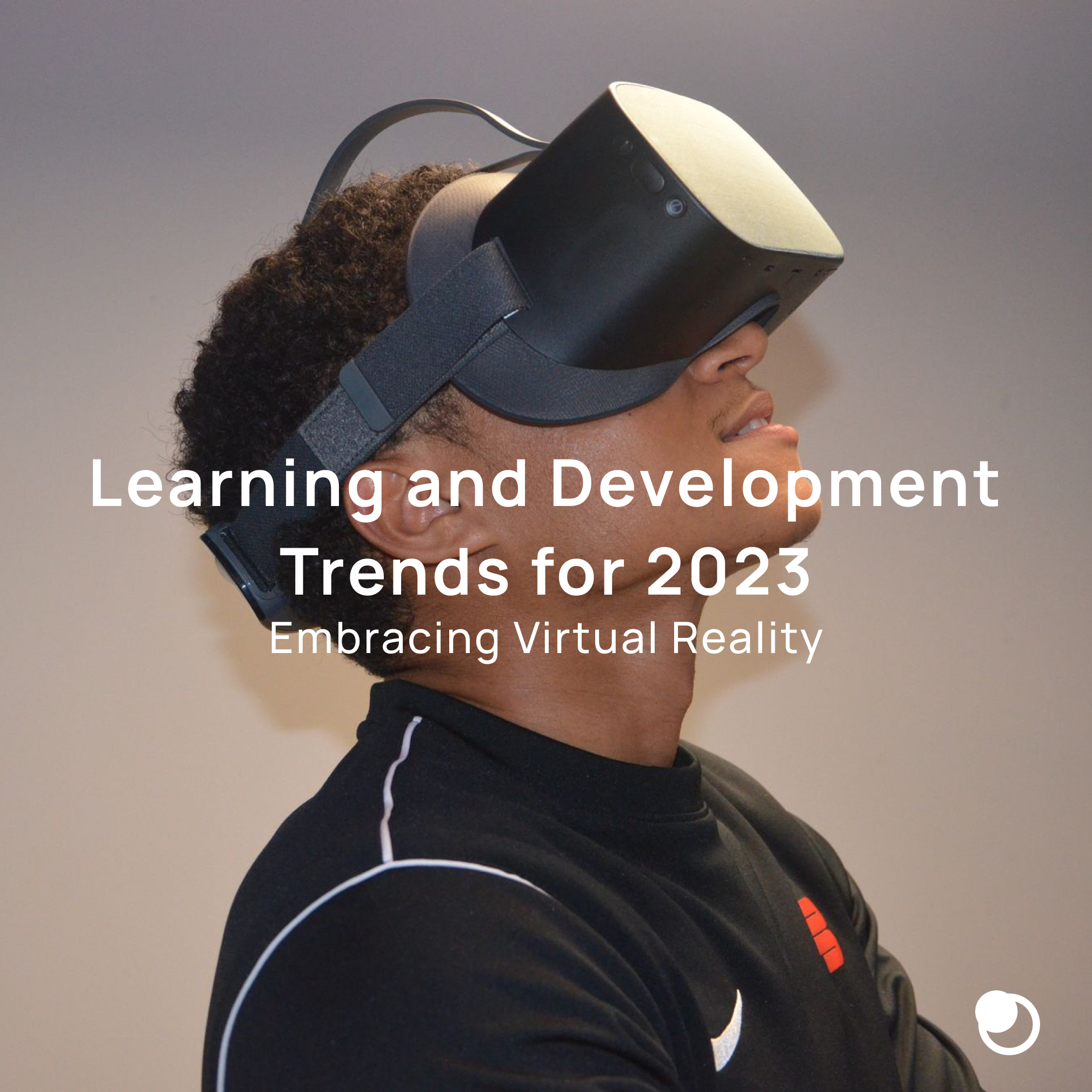
Introduction
In the fast-paced world of business and technology, learning and development have become essential components of career growth and organisational success. As such, it is important to keep up with emerging trends to remain competitive. In this post, we will explore three learning and development trends that are expected to become popular by 2023, with a special focus on the integration of virtual reality.
The Rise of AI
With AI in learning and development, employees can arrange their personalized learning material, decide on their objectives, and gain information based on their learning styles and preferences. This will allow them to learn the personalised content at their own pace and meet the criteria set. Increased use of AI and machine learning in the learning process can help personalise learning experiences, optimise the use of scarce resources, and provide real-time feedback to learners. A survey of more than 2,000 corporate trainers found that 80% of them believed that AI has the potential to improve the effectiveness of learning and development programs. Some of the main disadvantages of AI include lack of human interaction and risk to users’ data privacy and security.
Increased Emphasis on Soft Skills
As automation and artificial intelligence continue to transform the workplace, employers are recognising the importance of soft skills such as communication, collaboration, and emotional intelligence. According to a report by the World Economic Forum, these skills are becoming increasingly important in the workforce, with companies recognizing their value in enhancing productivity and promoting teamwork. As such, we can expect to see more emphasis placed on soft skill development in the coming years.
Personalised Learning Paths
Another trend that is expected to become popular by 2023 is personalised learning paths. With the rise of e-learning platforms, learners can now access a vast array of courses and resources that cater to their unique needs and preferences. However, the sheer volume of content can be overwhelming, and learners may struggle to find the most relevant and useful resources. To address this issue, organizations are beginning to use algorithms and data analytics to create personalised learning paths that are tailored to the individual learner’s needs.
More personalised and self-directed learning, through learning management systems (LMS) and other digital platforms, allow learners to take control of their development. LMS allows for educational content, tracks student progress, and manages and organises student data. However, some of the main disadvantages include limited flexibility, limited engagement and high costs.
The continued growth of microlearning involves delivering bite-sized pieces of information that can be easily consumed and retained. This approach is well-suited to those increasingly busy and with lower attention spans and can be effectively delivered through mobile devices and other digital platforms. While microlearning can be an effective tool for supporting learning and development, there are also some potential disadvantages to consider: limited retention, lack of context and limited depth of information.
Integration of Virtual Reality Training
Finally, we can expect to see increased integration of virtual reality in learning and development by 2023. Virtual reality has already shown great promise in enhancing learning experiences by providing learners with immersive and interactive environments that simulate real-world scenarios. For example, virtual reality can be used to simulate dangerous situations or complex procedures, allowing learners to practice in a safe and controlled environment. Additionally, virtual reality can be used to provide learners with real-time feedback and assessment, allowing them to track their progress and identify areas for improvement.
VR training is also helping companies to address the skills gap. With the rapid pace of technological change, many employees find it challenging to keep up with new skills requirements. VR training can help employees acquire new skills quickly and efficiently, enabling them to stay competitive in the job market.
The Effectiveness of Virtual Reality Training Compared to Traditional Training Methods
Numerous studies have shown that VR training is more effective than traditional training methods. A study conducted by PwC found that learners who used VR training were four times more focused than those who used traditional training methods. The study also found that VR training led to a 275% increase in confidence and a 40% reduction in training time.
Another study conducted by the University of Maryland found that students who learned in a VR environment were able to recall information better than those who learned in a traditional classroom setting. These studies demonstrate the effectiveness of VR training and its potential to revolutionize workplace learning and development.
Conclusion
In conclusion, learning and development are crucial components of career growth and organizational success. By staying up to date with emerging trends, organizations can remain competitive and provide their employees with the tools and resources they need to succeed. By embracing virtual reality, organizations can create more immersive and engaging learning experiences that promote skill development and enhance productivity. As such, we can expect to see an increased emphasis on soft skills, personalized learning paths, and the integration of virtual reality in the coming years.
For us, virtual reality training is the future of workplace learning and development. It provides a safe, engaging, and effective learning experience that can transform the way we acquire new skills and knowledge. With the continued growth and innovation in the VR training space, we can expect to see more companies adopting this technology to train their employees. As learning and development professionals, it is our responsibility to stay abreast of these trends and implement them to improve our training programs.








